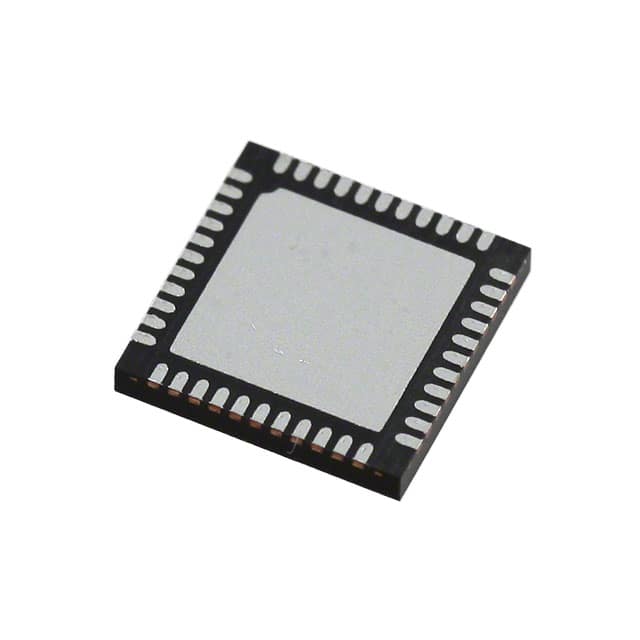LIS3L02AQ
Product Overview
The LIS3L02AQ belongs to the category of MEMS digital output motion sensor. It is commonly used in various applications such as consumer electronics, industrial, and automotive sectors. The sensor is known for its small size, low power consumption, and high accuracy. It is typically packaged in a small, surface-mount package and is available in various quantities to suit different production needs.
Specifications
- Operating Voltage: 1.71V to 3.6V
- Output Data Rate: 100 Hz to 1.6 kHz
- Sensitivity: ±2g / ±4g / ±8g / ±16g
- Interface: I2C/SPI
Detailed Pin Configuration
The LIS3L02AQ features a standard 16-pin LGA package with specific pins dedicated to power supply, communication interface, and data output.
Functional Features
- High Accuracy: Provides precise motion sensing capabilities.
- Low Power Consumption: Ideal for battery-powered devices.
- Small Form Factor: Enables integration into compact designs.
Advantages and Disadvantages
Advantages
- Accurate motion sensing
- Low power consumption
- Small form factor
Disadvantages
- Limited sensitivity options
- Requires careful handling during assembly
Working Principles
The LIS3L02AQ operates based on the principles of microelectromechanical systems (MEMS) technology. It utilizes capacitive sensing elements to detect changes in acceleration and converts these changes into digital output signals.
Detailed Application Field Plans
The LIS3L02AQ finds extensive use in applications such as: - Mobile devices for screen orientation and gesture recognition - Industrial equipment for vibration monitoring - Automotive systems for airbag deployment and vehicle stability control
Detailed and Complete Alternative Models
Some alternative models to the LIS3L02AQ include: - ADXL345 from Analog Devices - MPU-6050 from TDK InvenSense - BMA280 from Bosch Sensortec
In conclusion, the LIS3L02AQ is a versatile MEMS motion sensor that offers high accuracy, low power consumption, and a small form factor, making it suitable for a wide range of applications across different industries.
Word count: 298
10個與LIS3L02AQ在技術方案中應用相關的常見問題與解答
What is the LIS3L02AQ accelerometer used for?
- The LIS3L02AQ accelerometer is commonly used to measure acceleration in various technical solutions, such as motion detection, vibration monitoring, and tilt sensing.
What is the operating voltage range of the LIS3L02AQ?
- The operating voltage range of the LIS3L02AQ is typically between 2.16V and 3.6V.
How does the LIS3L02AQ communicate with a microcontroller?
- The LIS3L02AQ communicates with a microcontroller using an I2C or SPI interface.
What is the resolution of the LIS3L02AQ accelerometer?
- The LIS3L02AQ has a resolution of up to 12 bits, providing accurate measurement of acceleration.
Can the LIS3L02AQ be used for impact detection?
- Yes, the LIS3L02AQ can be utilized for impact detection due to its ability to accurately measure sudden changes in acceleration.
What are the typical applications of the LIS3L02AQ in automotive systems?
- In automotive systems, the LIS3L02AQ can be used for crash detection, airbag deployment, and vehicle stability control.
Does the LIS3L02AQ have built-in self-test capability?
- Yes, the LIS3L02AQ features built-in self-test capability to verify the proper functioning of the accelerometer.
What is the temperature range within which the LIS3L02AQ operates?
- The LIS3L02AQ typically operates within a temperature range of -40°C to 85°C, making it suitable for various environmental conditions.
Can the LIS3L02AQ be used for orientation detection in electronic devices?
- Yes, the LIS3L02AQ can be employed for orientation detection in electronic devices, enabling features like screen rotation and gaming control.
Are there any specific considerations for PCB layout when integrating the LIS3L02AQ?
- Proper grounding, decoupling capacitors, and minimizing noise sources are important considerations for PCB layout when integrating the LIS3L02AQ to ensure optimal performance.


